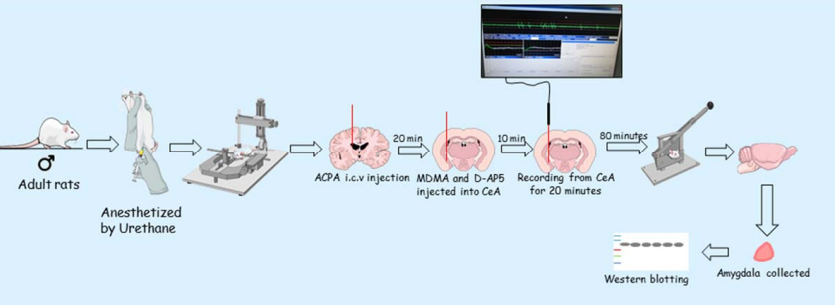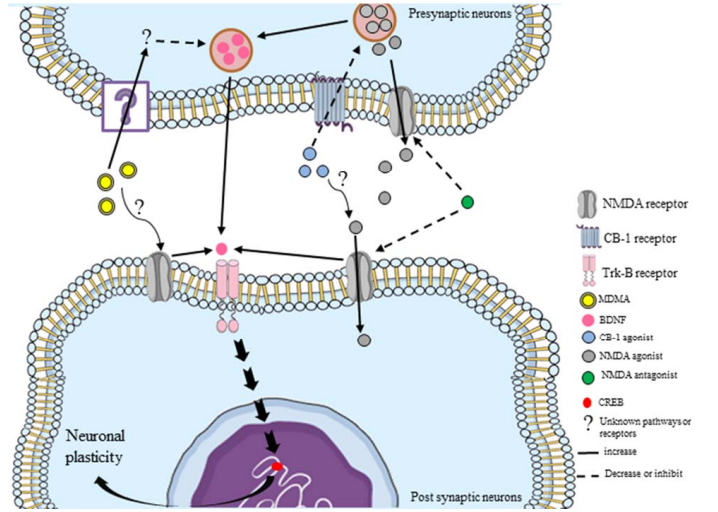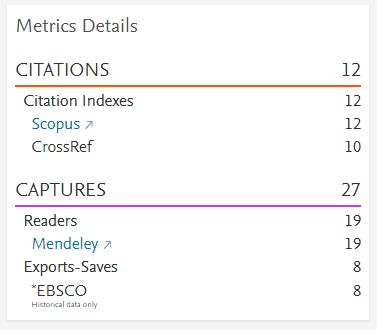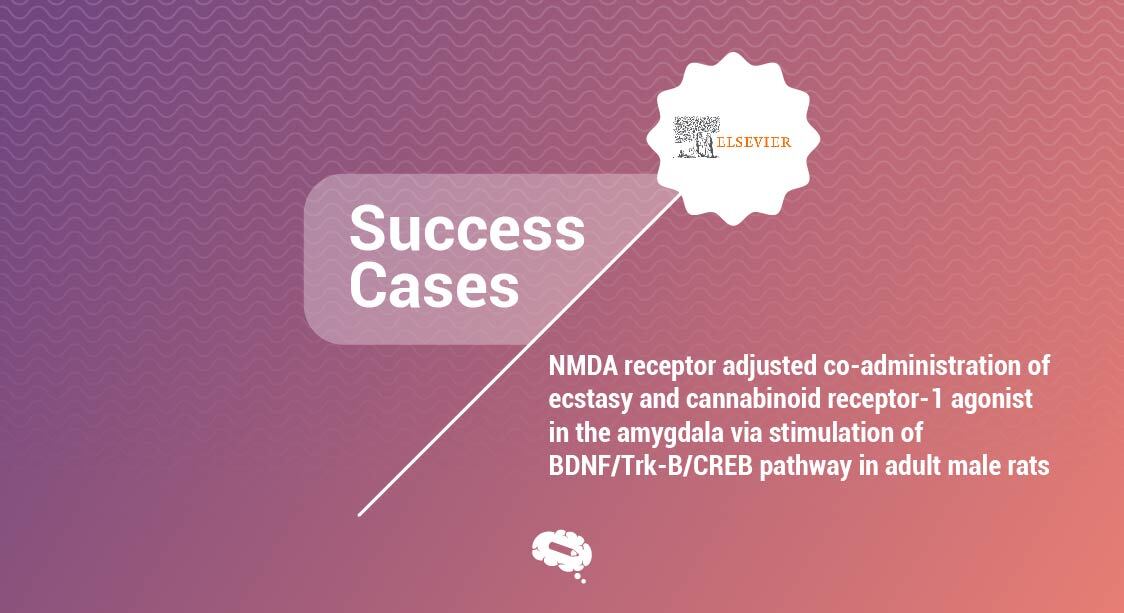Graphical abstracts are becoming very popular among academics. That is, the author created one amazing design to explain the whole point of this article with accurate images.
Check the complete original article.
Consumption of a selective CB-1 agonist such as ACPA protects neurons against MDMA toxicity in the amygdala
In ‘NMDA receptor adjusted co-administration of ecstasy and cannabinoid receptor-1 agonist in the amygdala via stimulation of BDNF/Trk-B/CREB pathway in adult male rats’, Ashabi and colleagues (2017) noted that NMDA blockade reduced neuronal firing rate and Tyrosine-kinase B/Brain-derived neurotrophic factor/cAMP response element binding protein level in MDMA and CB1 receptor agonist co-injected rats.
Glutamatergic system regulates the protective role of MDMA and ACPA combination via TrK-B receptors.
Graphical Abstracts powered by Mind the Graph

CB1 receptor activation or MDMA induction reduced neuronal firing rate. Simultaneous injection of these two drugs enhanced neuronal cell survival, and these events were reversed via NMDA receptors antagonist.
Probably, the protective role of glutamatergic receptors might be through activation of BDNF/Trk-B pathways.

Papers Impact and Performance
Selecting a 1-year option comparison of metrics against other articles/reviews that were also published in the same calendar year in that Journal we can notice that this article was more cited than 47% of them.

Use the power of infographics to boost your article as well. Try Mind the Graph!

Subscribe to our newsletter
Exclusive high quality content about effective visual
communication in science.

